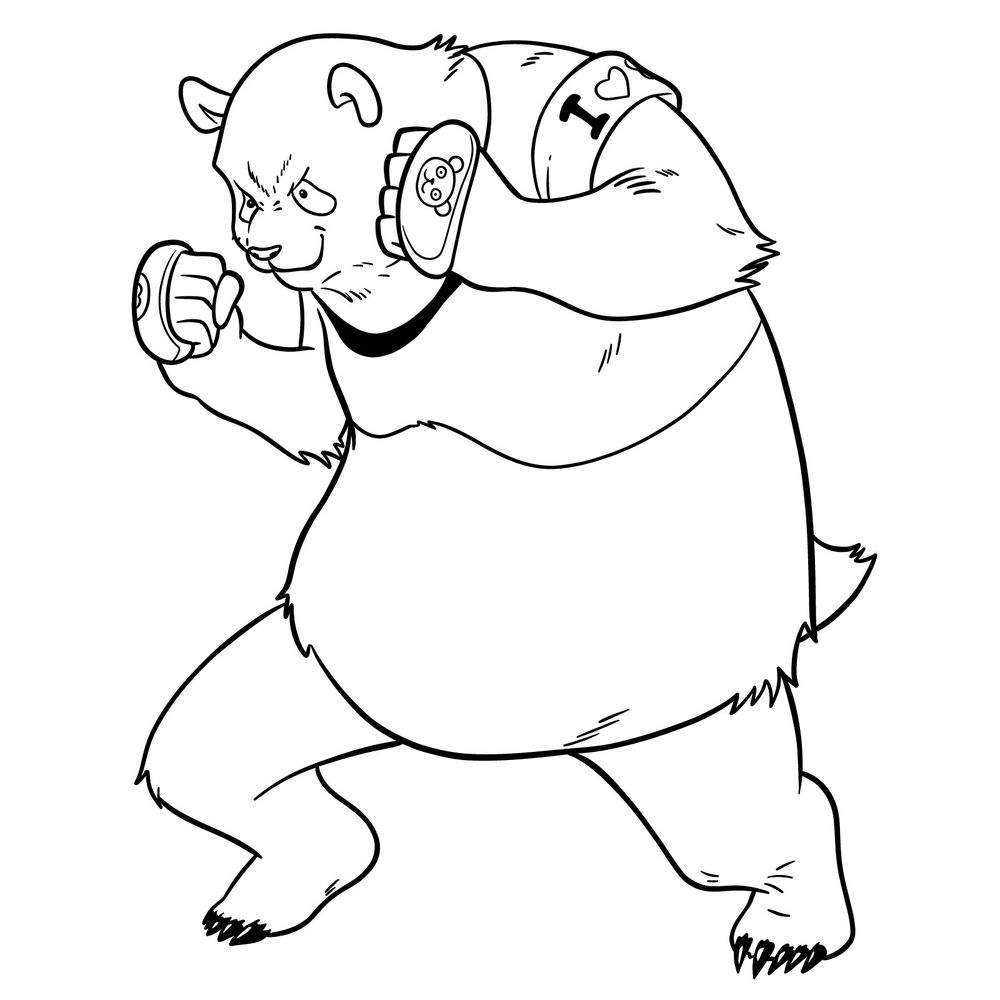Understanding how to draw Panda from the acclaimed anime series Jujutsu Kaisen requires not just a grasp of artistic techniques, but also an appreciation of the character’s distinctive traits. Panda, a major supporting character in Jujutsu Kaisen and a protagonist in its prequel, Jujutsu Kaisen 0: Jujutsu High, presents an interesting subject for artists and fans alike.
Background of Panda in Jujutsu Kaisen
Panda is not your typical panda; he is an Abrupt Mutated Cursed Corpse created by Masamichi Yaga. As a second-year student at Jujutsu High, Panda’s character design offers a unique blend of a bear-like frame with humanistic qualities. This amalgamation provides a rich canvas for a Panda drawing, demanding attention to both animalistic features and human-like expressions.
Physical Characteristics
When considering a Panda drawing, it’s essential to note his stature and appearance. Standing taller than his classmates, Panda’s bear-shaped frame is a defining characteristic. Artists should pay attention to his clothing choices, like armbands, scarves, and jackets, which add a personal touch to his design.
Personality Traits
Panda’s personality is a blend of humor and sarcasm, with a calm demeanor. His evolution from speaking like a computer to developing a unique personality reflects in his expressions and posture. Capturing this in a Panda drawing requires a focus on facial expressions that convey his light-heartedness and occasional sarcasm, especially in scenes with other characters like Mechamaru.
Interactions and Relationships
In your Panda drawing, consider how Panda’s interactions with characters like Satoru Gojo and Mei Mei influence his expressions and body language. His ability to remain upbeat, even in dire situations, and his empathetic nature towards others, offers a range of emotional contexts for artists to explore.
Your Blueprint to Panda Drawing Mastery
This guide comprises a series of high-quality images, each pinpointing a step in the drawing process. By following these steps in order, you’ll see Panda emerge from a basic sketch to a fully detailed character.
Our guide uses a color-coding system to help you through the process:
- Red Color: Indicates the focus of the current step.
- Black Color: Shows the lines you’ve drawn in previous steps.
- Grey Color: Serves as the foundation for your sketch.
The final stage of our guide allows you to ink your sketch. Inking brings out the contrast and makes your drawing pop. Always wait for the ink to dry before gently erasing the underlying pencil marks to avoid smudging.


















Drawing Panda from Jujutsu Kaisen is an engaging challenge that combines artistic skill with a deep understanding of the character. By focusing on his unique physical attributes, personality, and relationships, artists can create a Panda drawing that truly captures the essence of this beloved character. Share your masterpiece with our community on Facebook, Instagram, or Pinterest. And remember, practice is the key to improvement in the art of drawing, so keep your pencils sharp and your sketchbook ready for the next challenge!
